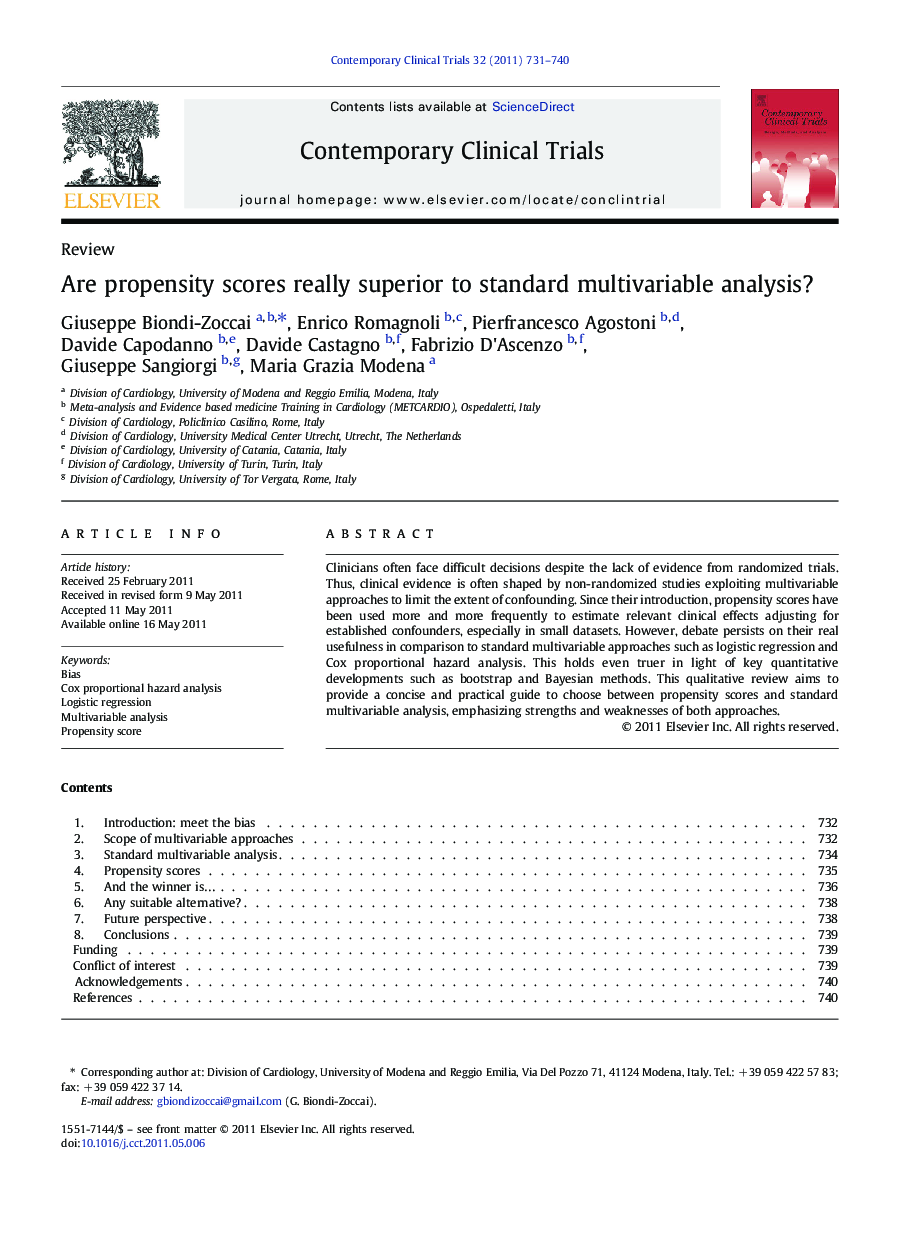| Article ID | Journal | Published Year | Pages | File Type |
|---|---|---|---|---|
| 3462739 | Contemporary Clinical Trials | 2011 | 10 Pages |
Clinicians often face difficult decisions despite the lack of evidence from randomized trials. Thus, clinical evidence is often shaped by non-randomized studies exploiting multivariable approaches to limit the extent of confounding. Since their introduction, propensity scores have been used more and more frequently to estimate relevant clinical effects adjusting for established confounders, especially in small datasets. However, debate persists on their real usefulness in comparison to standard multivariable approaches such as logistic regression and Cox proportional hazard analysis. This holds even truer in light of key quantitative developments such as bootstrap and Bayesian methods. This qualitative review aims to provide a concise and practical guide to choose between propensity scores and standard multivariable analysis, emphasizing strengths and weaknesses of both approaches.
